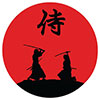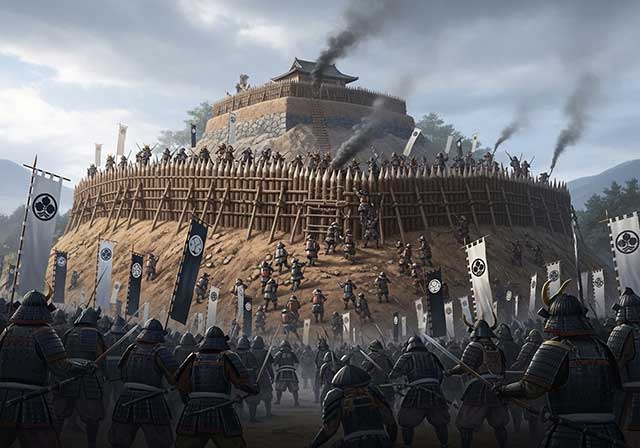
Kusunoki Masashige, hero of the Genko Rebellion (1331–1333), was a talented commander and inventive strategist. The two sieges of castles where he acted as defender are inscribed in gold letters in the history of Japanese military art.
After the start of Emperor Godaigo's rebellion, Masashige hastily prepared Akasaka Fort on one of the peaks of Mount Kongo for defense. The fortress was a square with sides measuring approximately 110–200 meters, surrounded by a clay-covered palisade. Inside, there were 20-30 simple watchtowers. A shallow dry moat was dug around the fort. Masashige placed 200 soldiers in the fort itself and hid 300 horsemen in the forest on the nearest hill.
The first assault
The Taiheiki estimates the shogunate's troops approaching the fort at 300,000 men, but this figure is clearly exaggerated several times over. Seeing that the fort was poorly fortified, the besiegers decided to storm it immediately. They dismounted, approached the moat, and prepared to climb the slope and wall. At that moment, a hail of arrows rained down on the samurai, killing and wounding many of the attackers.
Hastily retreating, the besiegers settled down to rest at a distance from the fort. The commanders of the royalist ambush chose this moment to attack. Dividing into two groups of 150 horsemen each, they attacked the enemy from two sides. The thick fog played into the attackers' hands — the besiegers did not immediately realize that they were under attack. At that moment, the fort gates opened, and Masashige, leading 200 horsemen, also counterattacked the shogunate troops, putting them to flight. However, given the enemy's overwhelming numerical superiority, it was impossible to completely defeat them, and Masashige ordered a retreat to the fortress.
Second attempt
The next day, at a meeting of the besiegers, it was proposed to proceed with a prolonged siege, cut down the forest around the fort to prevent ambushes, and prepare more thoroughly for the assault. However, some of the fighters from the provinces, who had suffered the greatest losses during the first assault, were eager for revenge and decided to launch a new attack. The army was divided: one third went to the nearby peaks to block a possible ambush, and two thirds approached the castle from four sides.
At first, it seemed that the second attempt at storming would be successful — encountering no resistance, the samurai overcame the slope and managed to climb the fort's wall. And then Masashige's next cunning plan came into play. The wall turned out to be double: the outer part was fake, consisting of a clay-coated palisade, but not driven into the ground, but tied to the main inner wall. When the attackers climbed onto the outer wall, the defenders cut the ropes, and it collapsed, crushing many samurai. Stones and logs were thrown after them, killing and maiming many warriors.
New tricks
The attackers prepared more thoroughly for the next assault. Wooden shields were made to protect against arrows, which were covered with several layers of leather for strength. The false wall was to be knocked down in advance with the help of “bear paws” — hooks on ropes.
When the besiegers got close to the wall and hooked their hooks, the defenders of the fortress began to pour boiling water on them from buckets with long handles, aiming at the openings at the top of the helmets and the joints in the armor. The scalded shogunate warriors threw down their shields and “bear paws” and fled.
From that moment on, the besiegers ceased hostilities and moved on to a blockade. They built towers out of logs, under the cover of which they occasionally fired at the fort from a distance.
Masashige's retreat
Since the fort had been built in a hurry, it was not prepared for a long siege, and after three weeks, there were only a few days' worth of provisions left in the fortress. Masashige decided that there was no need to die senselessly and that he could still serve the emperor's cause. An original plan of retreat was devised.
A huge pit was dug in the courtyard and a funeral pyre was built, where the bodies of the fallen defenders were placed. One man was left in the fort with the task of lighting the pyre when the others left. The besieged, having removed their armor, slipped through the ranks of the besieging army in small groups under the cover of darkness.
When the pyre was lit, the shogunate's soldiers stormed the empty castle and found many charred corpses and a single defender who, with tears in his eyes, told them about the suicide of Kusunoki Masashige and his loyal comrades. They believed him, and Masashige was long considered dead.
The Return
However, the following year, Masashige made a comeback, recapturing the captured Akasaka Fort. This time, he also resorted to another trick. Masashige's warriors disguised themselves as food carriers and, once inside the fortress, took out their weapons and opened the gates.
See also
-
The Siege of Hara Castle

The Shimabara Rebellion of 1637–1638, which culminated in the siege of Hara Castle, was the last major uprising of the Edo period and had serious political consequences.
-
Battle of Tennoji
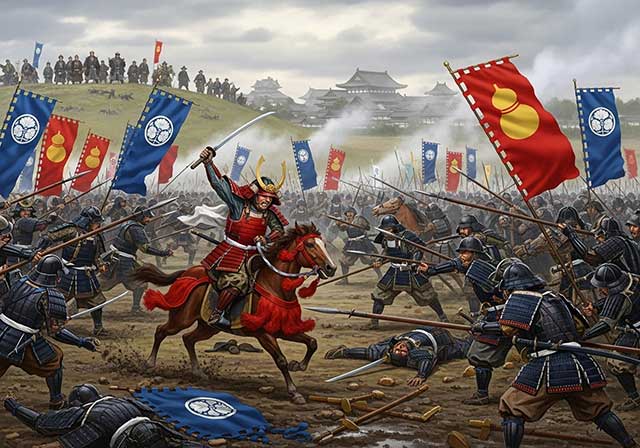
The confrontation between Tokugawa Ieyasu and Toyotomi Hideyori during the “Osaka Winter Campaign” ended with the signing of a peace treaty. On January 22, 1615, the day after the treaty was signed, Ieyasu pretended to disband his army. In reality, this meant that the Shimazu forces withdrew to the nearest port. On the same day, almost the entire Tokugawa army began filling in the outer moat.
-
Siege of Shuri Castle
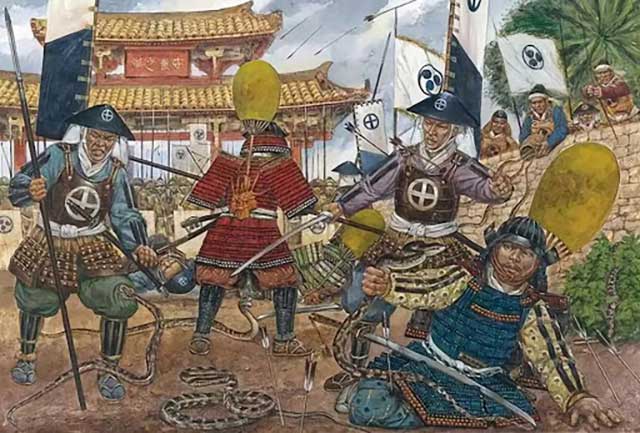
The Ryukyu Kingdom was established in 1429 on Okinawa, the largest island of the Ryukyu (Nansei) archipelago, as a result of the military unification of three rival kingdoms. In the following years, the state's control spread to all the islands of the archipelago.
-
The Siege of Fushimi Castle
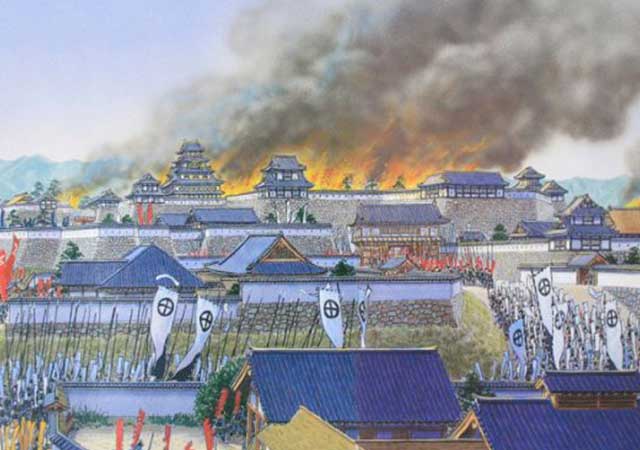
Fushimi can perhaps be considered one of the most “unfortunate” castles of the Sengoku Jidai period. The original castle was built by Toyotomi Hideyoshi in the southeast of Kyoto in 1594 as his residence in the imperial city.
-
The Siege of Otsu Castle
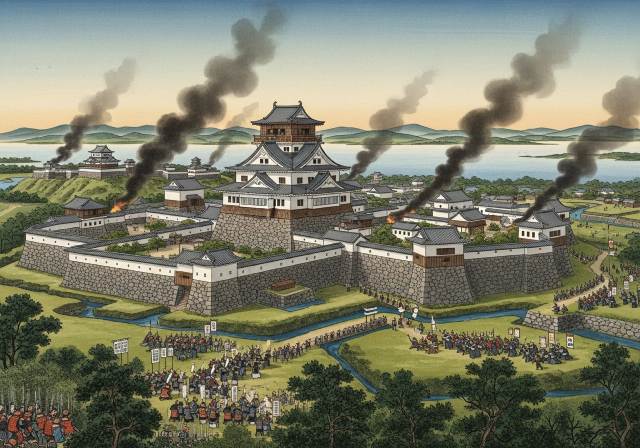
The siege of Otsu Castle was part of the Sekigahara campaign, during which the so-called Eastern Coalition, led by Tokugawa Ieyasu, fought against the Western Coalition, led by Ishida Mitsunari. Otsu Castle was built in 1586 by order of Toyotomi Hideyoshi near the capital Kyoto, on the site of the dismantled Sakamoto Castle. It belonged to the type of “water castles” — mizujō — as one side of it faced Japan's largest lake, Lake Biwa, and it was surrounded by a system of moats filled with lake water, which made the fortress resemble an island.
-
The Siege of Shiroishi Castle
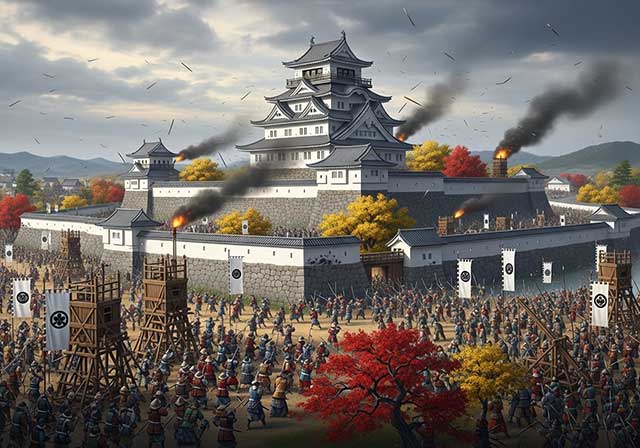
The siege of Shiroishi Castle was part of the Sekigahara campaign and took place several months before the decisive battle of Sekigahara. The daimyo of Aizu Province, Uesugi Kagekatsu, posed a serious threat to Tokugawa Ieyasu's plans to defeat the Western Coalition, and Ieyasu decided to curb his actions with the help of his northern vassals. To this end, he ordered Date Masamune to invade the province of Aizu and capture Shiroishi Castle.
-
The Second Siege of Jinju Castle
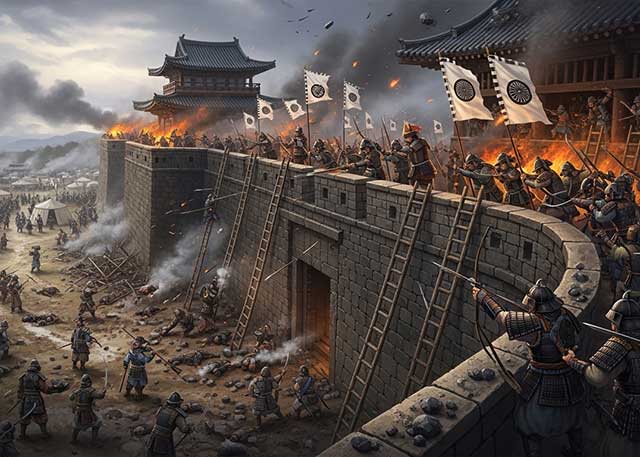
During the two Korean campaigns of the 16th century, the Japanese repeatedly had to capture enemy fortresses and defend occupied or constructed fortifications from the combined Korean and Chinese forces. Among all the operations of that time, the second siege of Jinju Castle is considered the most interesting from the point of view of siege warfare.
-
The Siege of Takamatsu Castle
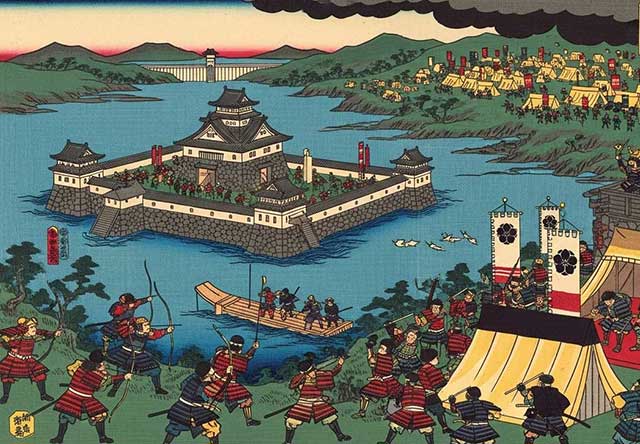
The siege of Takamatsu Castle in Bitchu Province is considered the first mizuzeme, or “water siege,” in Japanese history. Until then, such an original tactic had never been used.

